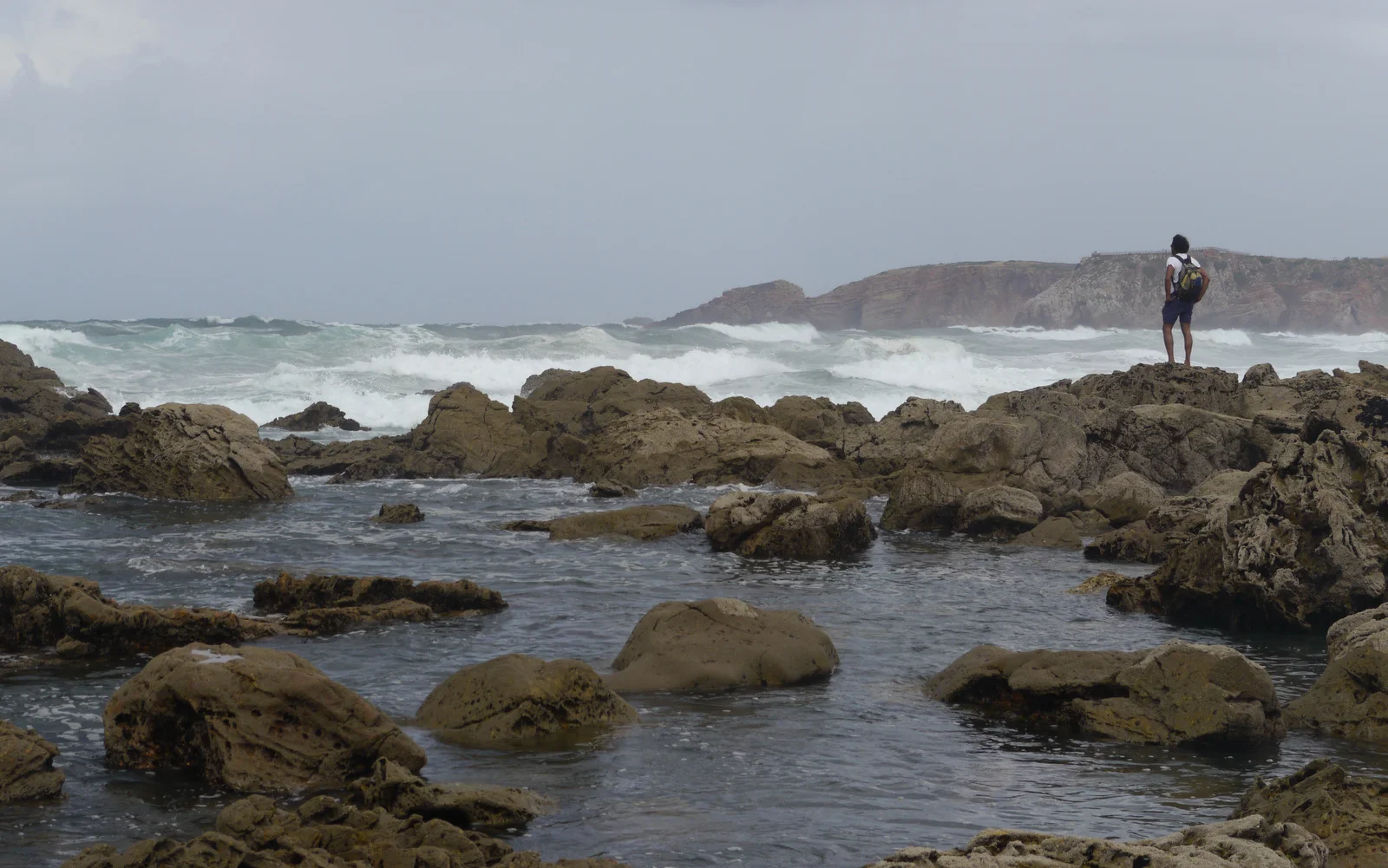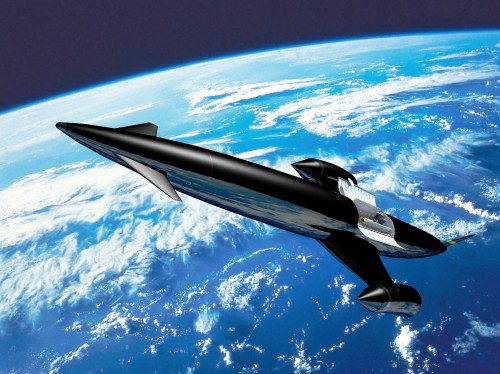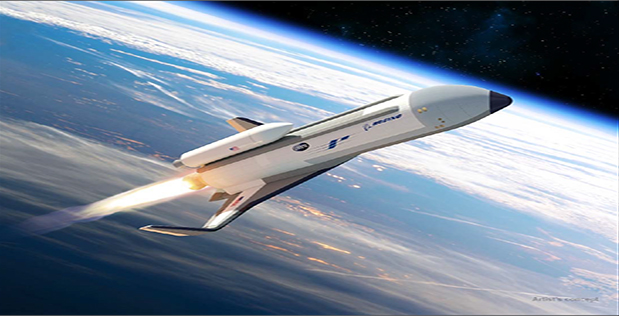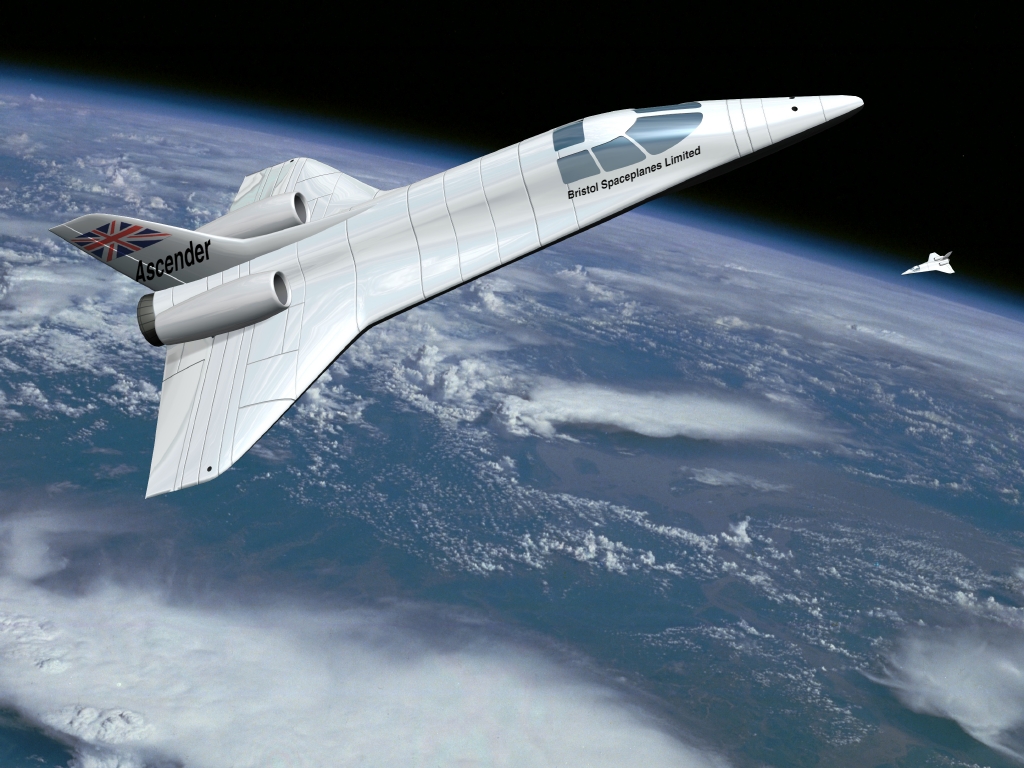To answer that question I have to start at the beginning. As a teenager I was fascinated with the advances in technology that humankind have made and in particular, flight. By realising the magic of birds we have managed to see the world from new perspectives, to open up all places on the planet and even to escape it.
Change
The last couple of years I’ve had this deep niggling feeling inside me as I tried to reconcile my passions and work with what I deem most important and whom I aspire to be. It started of as that slight nagging feeling that we’ve all felt at some point, like a caught zip or sunglasses in long hair, but the zip didn’t free itself and the sunglasses became too entangled until it could no longer be ignored. There was only one solution: to change.
ASTRONAUTS: WHY THE FUTURE MUST HAVE WINGS
**SPOILER ALERT** If you haven’t seen it yet, watch Astronauts: Do You Have What It Takes? Episode 4 on iPlayer first.
One of the tests that we were given was to present to the panel on a topic of space exploration. Being an aerospace engineer my talk was on a topic that has fascinated me since childhood: Access into Space.
Why The Future Must Have Wings
The hardest part of space travel in our near solar system is getting into space in the first place; out of our atmosphere.
So far the only way we have reached orbital spaceflight is by rockets and these, on the whole, are inefficient, expensive and unreliable.
In comparison, aircraft are very efficient, reusable and for anyone who has flown half way across the world on holiday, incredibly affordable.
In order to understand the difference between these two technologies that have developed over a similar timeframe we really need to understand how a rocket engine works:
· A rocket engine operates under the same principle of if release a blown up balloon. By accelerating a large amount of gas out of the back, an equal and opposite force is imparted onto the rocket pushing it upwards, as described by Newton’s third law of motion.
· The rocket is generating these hot, compressed gases internally through combustion. For any combustion be it a rocket or a campfire, you need three things: a fuel source, an oxygen source and a heat source. The rocket carries all of these components on board with it in stored energy and as a result becomes extremely heavy. This is evident when we see that the oxidiser is six times heavier than the fuel source!
· But this does give it one big advantage, the rocket can operate in the vacuum of space but must result in expending it’s stages as it goes up to reduce mass. And the atmosphere is just a hindrance.
In comparison, the airliner doesn’t see the atmosphere as a disadvantage but uses it beneficially in three different ways:
1. The atmosphere provides the aerodynamic lift on the wings providing the upwards force opposing gravity.
2. Instead of carrying the oxygen with it, the jet engine uses the oxygen in our atmosphere for combustion, and
3. Crucially the jet engines use the air as the working fluid or propellant. The big fans and compressors, suck the air in, compress it, heat it up in the combustion chamber and accelerate it out the back creating the equal and opposite force pushing the aircraft forward.
A much more elegant and efficient solution. Clearly the future of space access must our atmosphere as a benefit rather than always seeing it as a hindrance.
That’s why there is a lot of interest in developing single-stage-to-orbit spaceplanes.
A spaceplane takes off and lands just like an aircraft and uses an air-breathing engine and wings to climb to the upper reaches of our atmosphere travelling at Mach 5, or five times the speed of sound. As the air becomes too thin for the air-breathing engine, the intakes close off and it switches to a rocket engine, accelerating to Mach 25, for the last and final push into orbit.
Now imagine this, as our single stage to orbit vehicle hasn’t jettisoned it’s fuel tanks on its way to orbit, as soon as we reach orbit we have many more options open to us: We can refuel the spaceplane with a conveniently placed orbital refuelling station giving it enough fuel to gently pop over to the moon for a supply trip or a tourism visit and after a few days it will coast back to Earth and re-enter the Earth’s atmosphere. But the benefits don't just stop there, with the much superior re-entry characteristics the spaceplane offers it can land on one of several runways around the world and after a quick check over, a refuel, it is ready to go again. Completely reusable.
And that is why the future must have wings.
Astronauts: Do You Have What It Takes? Episode 5 is on Sunday 24th September at 8pm BBC2.
Segway Safari
First time I've been on a Segway and contrary to what I thought it's more than just for lazy people at airports... so much fun!
Warm-In' Water
Every diver knows that small apprehensive feeling as they shuffle forward on their large penguin feet, rocking like a pendulum on the moving deck. Top heavy with hoses and tanks hanging off them they muddle towards the free edge, ready to step forward into the deep blue ocean. Having cleared that hazardous journey, albeit mere metres, they balance themselves precariously on the threshold.
The last checks are performed; regulator entered into mouth, buoyancy aid inflated. Matching time with the surging deck, with one hand covering the face mask and mouth piece whilst the other holding the ancillary hoses, they step forward into the abyss. Clearing the boat they enter into the ocean, the senses are momentarily overwhelmed by the strange new world: Bubbling water cloud their vision and the splashes distorts all sound. But it’s the thrill of cold water felt throughout the body as the blue swallows them all that gives the greatest shock. The tight wetsuit flushes with cold, ocean water, giving the diver a decisive shiver.
The last place I experienced this was in the Andaman Islands, a beautiful set of islands in the tropical waters of the Indian Ocean. The waters though are warm, far warmer than when the legendary diver Jacques Cousteau explored these waters and told the world of the untouched treasures beneath. Sadly, as a result of the warm waters many of the shallow coral reefs have died and are a barren landscape of beige, calcium carbonate skeletons, a mere suggestion of what once was.
Diving here thus means going deeper, to 35 metres, where marine life can still thrive, albeit with the reduced sunlight of the deep. To dive deeper poses many challenges to the diver including nitrogen narcosis, decompression problems and a reduction in air supply. But it also means that you have to be more aware of your body temperature – a cold diver can quickly become a seriously ill diver and it gets a lot colder below. More than once I saw divers signal to their buddies with the international ‘I’m cold’ signs of folded arms rubbing each other preceding a flurry of hand communication and finally their ascent to the surface and the warmer waters above.
Maybe their bodies could not cope with the cold or maybe their wetsuits weren’t thick enough, at any rate they were not insulated enough. In my last post I had flamboyantly broadcasted how keeping warm is really about trapping air, but as the name suggests, wet suits are used in the water and there isn’t much air there. So how do they work?
Firstly, air doesn’t have any super special properties but the three things that make it the ideal insulator are that it is abundant, free and is a gas.
The magic of the wetsuit lies within the neoprene. Neoprene is a plastic foam material that is impregnated with small bubbles of nitrogen gas (like an Aero chocolate bar). Pure nitrogen is slightly better than air at thermal isolation. Putting all this in context, whilst water loses heat an incredible 25 times faster than air, neoprene, due to the amount of air bubbles trapped within it, loses heat at only nine times as fast at 30m depth (only twice as fast on the water surface).
The ingress of water into the suit, which gives that initial uncomfortable shock that all divers experience, is unfortunately a necessary evil. An absolutely skin tight neoprene suit that has no air gaps would be impossible to get on and off (think how thin tights are) and to keep the seals watertight requires some flashy suits that makes for very expensive bits of clothing.
However, we do that too. They’re aptly called dry suits and divers going for extended periods of time underwater or ice diving frequently uses this type of suit to stay warm. Despite being an avid diver and a frequent visitor to the Arctic I have yet combined the two... and I’m aching to try!
Coming back to the point on wetsuits, they rely on trapping a small amount of water between the skin and the neoprene material, keeping that same water there throughout the use.
By trapping only a thin layer of water which is very quickly heated up to body temperature the amount of heat lost would reduce dramatically. In contrast if the trapped water was constantly changing, such as in a loose wetsuit, the body would expend a lot more energy heating up the newly trapped water each time. By transporting the same heated up water with them divers achieve the goal of using the water too as insulation – albeit much less effective as the neoprene covering.
For anyone who has dived, surfed and swam both with and without wetsuits they would quickly attest to how much warmer it is with one.
The wetsuit is an incredible invention that allows us, without ever thinking about it, to dive deep in the Andaman Sea. Half an hour into my last dive on the Andaman Islands when many of the group had already ascended due to cold or low air I came across one of the most majestic and curious of ocean creatures. Magical!
Next: How to stay cool.
If you’re like me and need some equations, see below you science fiends:
There are three types of heat transfer; conduction, convection and radiation. The one that we are talking about most of the time is conduction.
Conduction is a nice long word that basically describes how heat (energy) is transferred between neighbouring molecules, or objects touching each other. The simplest form of understanding this is that if one has more neighbours that are very close together there would be more heat passed (lost). If there isn’t that many neighbours and they are all far apart then there would less heat energy passed on. A solid material has lots of neighbouring molecules all very close together whilst a gas has the exact opposite, with liquids sitting somewhere between.
This property of the material is known as the thermal conductivity.
The other factors that affect heat transfer is described in the conduction equation below.
Heat conduction (per unit time) = (Thermal conductivity) x (Area) x (Temperature difference)/Thickness
It all describes what we all know from common sense. If your jacket (insulation) is thick then you lose less heat, but if you have a larger surface area exposed then you will lose more heat. The final part of the equation suggests that if the difference between temperatures is greater, then more heat is lost, hardly surprising really.
The differences in thermal conductivity are:
Diving deep under water increases the pressure which would lead to the compression of gases, the values for thermal conductivity are given below:
It’s all about the (H)Air
Now that summer’s coming round with a scorching hot Spring all of my ‘warm’ jackets are being put away, to the back of the wardrobe not to be looked at again for six months. A question came to mind: What makes a warm jacket? Why is it warm?
I know the answer to this question, having thought about a lot over the years, but I was curious as to whether other people did. Even asking my engineer friends, who pride themselves in knowing how things work, what actually made a jacket warm it did stump them for a few seconds presenting me with a look of bemusement as their minds churned away.
Clothing, be it big, warm jackets in the winter to just a light covering in the summer, is absolutely crucial for our survival. Think about if clothing was never invented, ignoring the fact that we wouldn’t ever have made it out of Africa and assuming we were all comfortable seeing each other in the nude. Popping out even on a summer’s day in the buff sends shivers down my spine just thinking about it and imagine going to a British beach without a wind jacket...brrrr!!
Isn’t it bizarre that despite how crucial clothing is for our survival, for our success in inhabiting large portions of the world, that we rarely give it a second thought about why these materials keep us warm? About why certain materials work better than others? We just know it.
So why do I know about this topic? Because I have gotten cold, very cold! In 2008, during our first attempt to cross the Penny Ice Cap on Canada’s Baffin Island in early spring conditions my feet became so cold they turned blue and were completely numb. It was apparent that to continue on the expedition was to seriously risk my feet or worse and so with no real choice at hand we had to back off the expedition. It was a massive blow back then, an expedition a year in the planning, ruined.
The most curious thing though, was that my team mate, Antony, and I were wearing almost identical clothing. Everything down to our boots was the same and brand new. Antony’s feet were fine. “Warm and toasty” he said. I had no idea why my feet got cold.
Three years later I figured it out. It was the simple fact of my boots being too small. It’s amazing how the best laid plans went awry due to just the simplest of errors. We went back attempting the crossing again in 2011. This time, despite the same brand and model of boots, I wore a size bigger. My feet were fine, more than fine, they were as happy as Larry.
‘Ah, yes of course’ we say to ourselves. ‘Can’t have boots that are too small.’ But why? What is the science behind this? The answer is all around us. Air.
Air is the best* abundant source of insulating material. It’s also free, something nature has found out long ago. Our hair, an animal’s fur and bird’s feathers primary purpose is to trap air. By trapping a good layer of air between your warm body and the cold harsh world, the smaller the heat transfer, the warmer you will be.
The polar bear has even gone one step further; each of their hair is actually hollow allowing air to be trapped within each strand as well as between the individual hairs improving the insulating properties. On top of hollow hairs, the sea otter, with no blubber to keep it warm, relies on the densest fur in the animal kingdom allowing air to be trapped within its fur whilst spending prolonged periods in the water. It’s all about trapping air.
That’s why when there is a wind blowing at you; through your hair, or you’ve dunked your head in a bucket of water**, destroying that trapped layer of insulating air; you lose a lot of heat.
That is exactly how our warm jackets work, be it stuffed with goose feathers or high-tech synthetic fibres. The design of the feathers is optimum to trap as much air in the lightest and smallest structure. Cover these wonderful feathers/fibres in a windproof or even waterproof shell and you’ve got yourself a jacket to rival nature’s best inventions.
So what happened when my boots were too small? My toes pressed up against the front of the boot, squashed the fluffy fibres of my socks and destroyed the trapped air that would otherwise have provided a heat barrier. Instead what I was left with was a direct and solid conduction path to the -35C exterior sucking away my heat. They had no hope.
Next: How do wetsuits keep you warm?
* - the best actually would be a vacuum such as that you find in your Thermos flask but those are pretty difficult and expensive to create and not very practical to be wearing.
** - water in your hair also creates greater heat transfer by evaporation, but that's something for another day...
At Odds
Why are we still flying?
This seems like a question not worth bothering to answer. The reasons, as we all know, are endless, convincing and, to that end, not worth repeating. But the reasons against are not ignorable either– flying along with meat production is the greatest producer of green-house gasses, the greatest contributor to climate change.
My interest in this topic is even more intimate than for the typical left-leaning, vegan-becoming, globetrotting dinky (*Double Income No Kids). I design aircraft for a living. You could say I am in bed with the enemy and indeed I occasionally get accused of this. “Ah, should you be designing the monsters that are destroying our planet?” I’m asked. To which I reply, “No that would be parents.” For without people flying there would not be any need for aircraft and I would be out of a job. For all the failures of western capitalism and the free market at least that much is true. And the demand is huge. Airbus, the company who I am designing for at the moment, has a backlog of over 6,000 aircraft. Boeing undoubtedly has a similar number and the growth of newly flying citizens in the emerging markets is phenomenal.
But how wrong that accusation is goes even further: We’re the good guys. The very nature of the industry and market with legislation and cost competitiveness means that each generation of aircraft we design are more efficient and less polluting. We go to extreme levels to achieve these goals and as a structural designer it would not be uncommon for me to spend a month doing a calculation to save a few grams of an aircraft part. The A350, Airbus’s new flagship aircraft, which I am working on now, is the greenest civilian airliner to fly.
Having said all that, the facts remain the same. Flying is completely at odds with the environmental movement. The greenness of new aircraft compared to old ones is measured in single percentage points and, without being overly accurate with my figures here, you generate a smaller carbon footprint by half if you’re driving alone than by flying. This difference would be even more remarkable if you are a couple or a family travelling in one car, where the carbon footprint per person goes down, than a similar number flying (multiplication).
So maybe I should rephrase the question: Why am I still flying?
It is for the reasons that we so all know. It is cheap, amazingly quick and acceptable. It is because everyone else is doing it. It is because these reasons are more important to us individually than the collective good that limiting climate change would have. It is not because we don’t care, it’s because we don’t care enough.
“I take the train.” I say to those doubters. “When it’s only mildly less convenient than flying.” I am forced to add. The trouble is it’s often three times more expensive and takes twice as long. “...and I avoid flying just for weekends.” I finish off with legitimising my green credentials, which tends to mean that for things I ‘shouldn’t’ miss I extend the trip to a week to fit that profile. As for the heralded city breaks to show off our glamorous life styles on Facebook, those I definitely do not do. I much prefer camping in Cornwall anyway.
But that’s not good enough and I think I’m more conscious of the impact than most people. If I can’t do it (won’t do it), how can anyone else can? The answer, sadly, is that in our affluent, globalised, self-gratifying world we are not going to opt for wilful restraint. That also includes not voting in a government that will make these choices less wilful. Are we thus screwed?
Yes and no.
Yes that all this proves that we are as a species, without beating much about the bush, a little crap. It proves that collective activism is sporadic and there is no formula to ignite the fire of our collective hearts and minds. This is compounded by the fact that this is a global problem and requires global action. The larger the number of people affected, the hotter the pot needs to boil before a shift in societal values – this pot is seven billion people strong.
So what do we do whilst this pot is boiling away? Maybe the answer really does lie in the very reason we are in this mess in the first place: Innovation.
The early aeronauts in the latter part of 19th century were a disparate bunch of scientists and engineers. They didn’t receive much funding and in fact a lot of the establishment were dismissive of the folly of flight. But look at what a giant step forward we have made when we did give this technology the attention and importance it deserved. The A380 can transport over 550 people half way across the world at close to the speed of sound and scram jets are flying at 24 times faster!
Despite this lesson in history there is a sense of déjà vu. The greatest innovation in the green revolution in technology is happening on the fringes of the economy. Small technology companies, with small budgets, showing to the world what might be possible if we only look in the right direction.
There is no greater example than the phenomenal Solar Impulse 2 project with their attempt, happening right now, to fly a manned plane around the world powered only by solar energy, quoting directly from their website, the mission statement of the small Swiss company is “to prove that pioneering spirit and innovation can really change the world.”
Yet it’s a tiny company. Why is the only noteworthy thing to say about the big players in this game their notable absence? The sceptic would whisper, ‘it’s because it won’t make any money’. That is true. It is the equivalent of a fishermen sailing out into the North Sea to show the rich canal boat operators that travelling across the sea is possible. Despite how utterly brilliant this achievement is, we are not going to all be flying around in solar powered aircraft for a very long time, or maybe never if there isn’t the massive investment of capital into green technologies it deserves.
That’s where government policy comes in. Companies aren’t going to invest in new technology unless it’s a) a proven winner, b) they have to (legislation) or c) it’s funded from elsewhere (government funds). The ‘Proven Winner’ category is pretty much where we are now, edging forward at a boring snail pace. We require the b’s and c’s. We require legislation forcing companies to adopt greener pathways: The aircraft noise reduction legislation across Europe has already forced manufacturers to change their designs. Or we require massive government investment, which is a dirty word to some, but if we think of it as a massive crowd funding exercise it seems a little cooler.
Putting all this in perspective, wouldn’t it be wonderful if we could travel the world without the cloud of guilt hanging over us, or shrouding ourselves in ignorance to avoid confrontation with our ethics, or asking ourselves the question ‘Why are we flying?’
Wouldn’t it be wonderful to travel in an aircraft like this?
Jiten's Factory
**NEW VIDEO ONLINE**
The fascinating world behind one of India's small factories.
The Present of Travelling
Indian Railway System
The Indian railway system is awesome. It handles over 7 billion passengers in the world each year making it most probably the largest mass transportation system in the world*. These passengers as well as millions of tonnes of frieght travel over 64,000 km of tracks in one of 9,000 locomotives. Finally these lucky travellers have over 7,000 stations to choose from. The railway has over a million regular employees making it one of the worlds largest single employer too. Managing this system is mind boggling but the Indians haven't balked at this task. They have grasped it with both hands and created an online platform where one can book seats on any one of the 10,000 daily trains** through the seven different classes. But that's not all either, 50% of the reserved train tickets are held in an emergency quota and only released for sale one day before travel making the online rush for tickets a daily crush for any system. But it works and it works well. Could this be the world's largest operable online platform?*
Again, that's not all. If one changes their mind they can cancel beforehand and receive about 95% of the ticket cost back and even if one doesn't cancel and not travel one is eligible for some refund.
But no system is perfect and my train is delayed by 4 hours... :(
* Be great if someone can verify these. ** From wikipedia. Trust it at your own peril.
A lecture on plate tectonics - Likoma Island, Malawi
The village of Chona (no electricity, no running water) PRESENTS: A special lecture on Aeronautics
The village of Chona, Zambia is not really a village at all but more of a focal point, a place of infrastructure where the wider community gathers. It has a health clinic, a school, a small market and a well meaning everyday the community for miles around descend to Chona before heading back to their small plots of land and huts in the evening. It is here at the local school, with so many pupils that the school starts at 7am to 5pm working in two shifts, where I offered to give a lecture on Aeronautics to the eldest math and physics class. The small classroom, packed with fifty Grade 9 pupils wait patiently as I am presented. As with the impeccable politeness of all Zambians they stand when I enter the class room, greeting me formally yet warmly. I forgot to ask them to sit and they continued standing until the head teacher intervened and gave the instruction.
As with schools in the UK, all the pupils wore a school uniform, shirt and tie for boys and skirt, blouse and jumper (?) for the girls. At this age in school, their shirts were not torn or over used and almost all had a note book to write in.
I started at the beginning. The most that any of these children had ever gotten to an aircraft is seeing the large airliners silently cruising through the blue skies kilometers above them. Had they ever asked themselves about how it could fly? Or even how big these aircraft were? From their astonishment I would say no. Their initial shyness, coupled with ignorance soon gave way to intrigue and fascination. Aircraft, aeroplanes, helicopters are understandable to small villagers like themselves who may have never even been in a car before.
They started answering the questions I posed them. One boy, even answered correctly as to why the aircraft needed a tail using his knowledge of the large African birds around them. Another correctly answered to what would happen if the aircraft started to go too slowly. Their questions too became more sophisticated, 'Sir, how do you get oxygen into the aircraft?', 'Why can't you open the windows?'
The greatest part of the lesson was taken up by practical maths. They were to work out in relation to other modes of transport how fast an aircraft travels at. Speed is not something they are accustomed to. The question 'How fast can you travel by bike?' Was met with shrugs until they could think about how far their house was and how long it took to get to school. 30 minutes to travel 7km equals 14km/h. The car, which most had never travelled on, was worked out to be at 120km/h. But how do you work out the speed of an airliner?
I gave them a few clues: 1) Airliners cruise at roughly Mach 0.9, 2) Speed of sound is roughly 300m/s. A few brave children, came to the black board to work it out. Having no calculators all calculation must be done long hand or mentally. When they worked out the speed at 972km/h they were astonished! Shouts of surprise and murmurs of disbelief filled the classroom and exploded to a raucous when they found out that fighter jets can travel at 2-3 times that speed.
Hands were shooting up now and the questions flowed one after another non-stop. But time was now over and I left them in a state of wonder.
As Mr. Moses, the senior teacher, said as we left, "Thank you. It is inspiring to the young village children to realise where they can emerge with studying and the usefulness of it."
[gallery]























